Speaking at the Defence Committee on today, Healey set out new details on the evolving mix of F-35 variants in UK service and how the newly announced F-35A aircraft will fit into future plans.
The session provided the first detailed public discussion of the F-35A decision since it was announced last week. The Defence Secretary said 12 F-35As will be substituted into the next tranche of 27 jets to be ordered, replacing 12 F-35Bs that would otherwise have been procured.
“I expect those F-35As to start being delivered before the end of the decade,” Healey told the committee, reiterating that this change reflects “a significant change in our nuclear posture” as the UK steps up its role in NATO’s nuclear burden-sharing.
Derek Twigg MP questioned whether the shift in variant mix would affect British industry, particularly Rolls-Royce, which produces the lift fan used only in the F-35B. Healey said the workshare implications of the A-model substitution were still being negotiated, but added that the A variant is expected to cost “around 20% less” than the B.
David Williams, Permanent Secretary at the Ministry of Defence, noted that “there is UK content in every F-35 whether we’re buying it or not,” but confirmed that a reduction in B-model purchases would impact the UK’s industrial returns: “The question then comes back to the fleet mix in potential further tranches of buying beyond the first three tranches,” he said.
Healey also added that decisions on the overall fleet mix, future Typhoon purchases and combat air investment would be made “in the context of the Defence Investment Plan over the next few months”.
General Dame Sharon Nesmith, Vice Chief of the Defence Staff, clarified that the new F-35As are being acquired primarily for the Operational Conversion Unit (OCU), simplifying training and reducing costs. “It is a more effective and more efficient way to run some of our training,” she said, and “we’re not anticipating it having any impact on the operational outputs.”
But MPs raised concerns about what message this sends about the future shape of the UK fleet. Calvin Bailey MP asked whether the 12 F-35As would be a standalone unit “that can only be committed to NATO”, given the lack of tanker or infrastructure support to deploy them independently.
Jesse Norman MP summed up the ambiguity: “They’re basically a training aircraft with benefits. That’s also the nuclear option. And you can commit them to NATO, but you couldn’t use them anywhere else.”
On the broader question of why the UK chose to join NATO’s dual-capable aircraft mission with F-35A rather than pursue an indigenous tactical nuclear capability, Healey said: “Conceptually and in theory? I guess we could. But this is an existing NATO nuclear mission. The best thing we can do is contribute to it.”
He added: “This was a decision that the Prime Minister and I took… It is warmly welcomed by the NATO Secretary General, by NATO allies, and by the US.”
The committee also pressed Healey on the Typhoon programme. While he confirmed the Strategic Defence Review had recommended upgrades to the fleet, he declined to commit to any increase in numbers. “Decisions about the composition of our future combat air purchases… will be made in the context of the Defence Investment Plan over the next few months,” he said.
The 138 F-35 target, first set over a decade ago, remains on the books, but with no defined pathway or date. “This is a programme that is going to stretch into the 2030s, 2040s, 2050s,” Healey said.


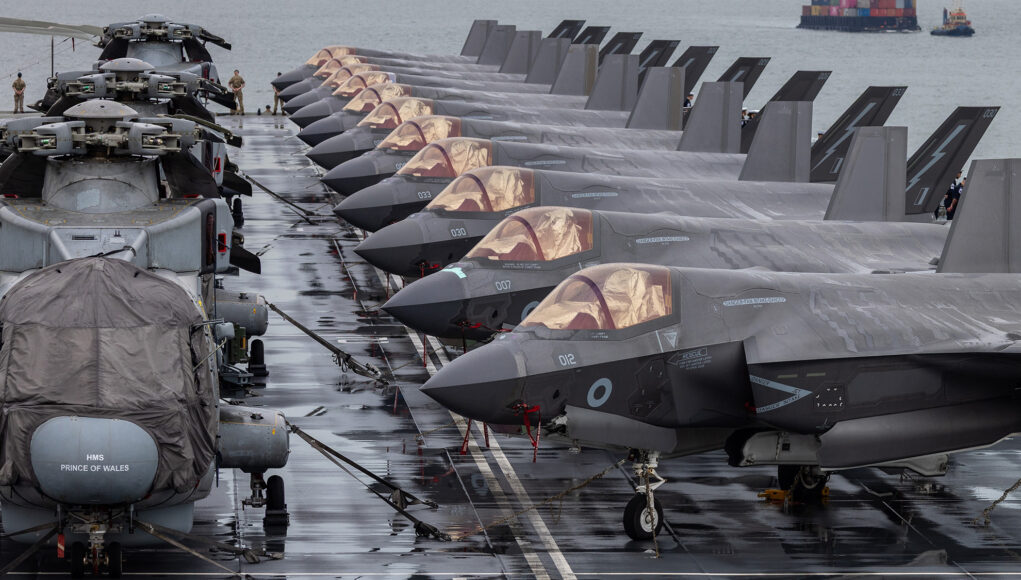
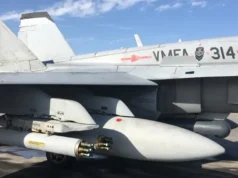

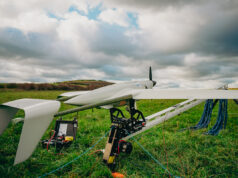
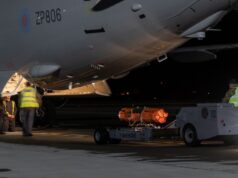
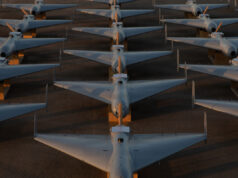
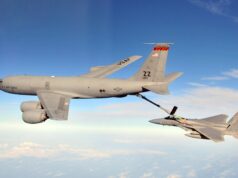
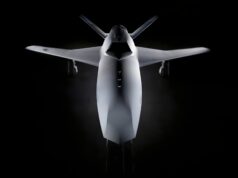

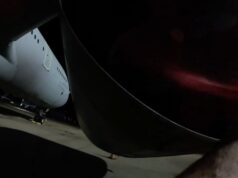
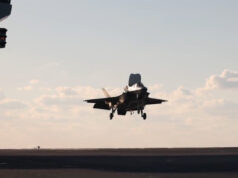

If we are going to have the “A” version why not buy 24 and have done with it. I’m sure the RAF would wellcome them.
Going to assume it’s going to be a split by from here onwards. Each new batch a few of both.
I’m sure that’s the plan and it should also save a considerable amount of money throughout the life cycle of the F-35 fleet.
Using the A version to train for the B, there’s probably a lot of crossover but the vstol? Why not more F35Bs and use the older Bs for training or is that what they’re doing now? Agree on 24, 12 sounds like a half job. The A’s will have the internal cannon, but no purchase of podded cannons for the Bs?
The A is only going to be used for training. They will never fly operations. It’s not a capability.
VSTOL in the F35B is an automatic feature so not very training intensive. Everything else is the same from controls etc.
Not saying this is right or wrong move but with £100+ maintenance intensive stealth aircraft we need to look at training in a different manner to save money.
We know now why the order was just for 12 and this will not be a fleet with in a fleet and will not jeopardise GCAP.
Jim, everyone has been saying the the sole reason to procure the A model is to enable tactical nuclear strike. So why is that a training application?
Whose sole reason, Graham?
The RAF hate that they share jets with the Navy. One year they have access to dozens of F-35s, then the Navy fancies a jaunt to the Pacific and they have a mere handful. It would be so much better if they had aircraft that the Navy couldn’t use. The F-35A is cheaper than the B, it has better range, and best of all, the Navy can’t use it. But how do you make the case for F-35A. They’ve been trying for years and getting nowhere.
One of the biggest issues is that it’s yet another jet aircraft type that will need different maintenance and spares, and the optics of having three jet aircraft types while developing a fourth isn’t good. So what they needed was a Trojan Horse. A way to get a few F-35As in, so that all the costs of a new type, the training and maintenance is dealt with and the next request for a couple of squadrons will have fewer objections.
So they hit on the idea of getting a few for training/conversion to F-35B? Wizzard wheeze! They can claim to be saving money and segregate out training the handful of functions, take-off, landing in-air refuelling, etc that can only be practiced on an F-35B.
That almost sounds good enough, but the savings are marginal and the Prime Minister doesn’t care about actual Defence at all. However, he cares about looking good on various topics he doesn’t care about, of which Defence is one. So we get the tactical nuclear strike thing. It lets the PM sound tough, it costs no extra budget – supposedly even saves money – it ticks boxes for E-NATO and America, playing into the NATO first agenda. So that’s what’s announced by the PM and the DefSec. That’s what the aircraft are for.
The RAF will train for the tactical nuclear role, but nobody expects they’ll be used that way for real. The PM doesn’t care. He’s had his moment in the spotlight, and the RAF says these can actually save money in the training role, so the RAF will use them for conversion training to the F-35B, and that’s what they in turn have announced.
No doubt the RAF will also be using them as their Trojan Horse to get more F-35As next time they apply the pressure. In the long run they’ll be happiest to dump the B’s on the Navy and completely swap to the A’s. They haven’t announced this publicly, so the announced uses are tactical nukes for the PM and the Cabinet, and training for the RAF.
I should add that’s not the only “thin end of the wedge” thinking going on here. The CDS believes Britain needs a tactical nuclear capability and he’s been lobbying for it unsuccessfully. The F-35As as nuclear delivery trucks can also be seen as a sop to him and seen by him as the thought being father to the capability. Once we have a dependent tactical capability and a second leg of the tripod, perhaps that can be parlayed up in the future to the real thing.
With Radakin on his way out and Knighton on his way in, I fancy the Air Force’s hidden agenda is more likely to come to pass than the CDS’s. However, Knighton worked on the start of GCAP/FCAS and he might see the F-35As as a threat. We’ll have to wait to see how this stuff plays out.
Quentin, why are you saying the A version would be used to train for the B? That makes no sense as they are very different to fly. The As are supposedly being procured for tactical nuclear strike. Clearly a few of them will be in the OCU for training F-35A pilots.
Read the article above. The minister specifically states they are for training in the OCU and the nuclear mission is a bonus.
It’s literally the public plan from the RAF, Graham. The nuclear role is actually secondary – but appears to be the political leverage to get the A in the first place.
Plan seems to be to put the A’s in the OCU, releasing Bs to create the third frontline Sqn. And the cross-over between variants is supposedly very similar from a pilot perspective.
Because you don’t need 24 jets for an OCU training squadron 🤦🏻♂️
Geoff, surely the RAF has worked out that they need 12? Who are we to query their assessment?
I am for one Graham. Do we actually know that the RAF only want 12 or is it just the government want? Personally, I think the whole purchase is daft. Tactical nukes with 12 ‘planes?
If you speak of the record with the RAF they believe the 35A buy will be 27. Which to my mind means no more B for the foreseeable future. 27 would be about the bare minimum to be credible.
It won’t be as valuable to UK industry as the B variant. It will require additions/changes to the training stream. It will require a additions/changes to the supply chain.
So, it will absolutely not save 20% per airframe.
Also;
It will see the death of UK Typhoon production as all our potential foreign sales are being blocked.
It will be a cut to the carriers over the lifetime of the program.
It very well could undermine/restrict future Tempest orders.
By the time we get the first frontline airframe we could have been well underway own tactical nuke program, with all the scientific, industrial & political benefits it could have brought with it.
Robertson can knock out a good SDR, it’s the tools in government that let him down. Twice now?
“Conceptually and in theory? I guess we could.” Those are the words of a man out of his depth, thank god he doesn’t have one of the important cabinet posts.
I still think GCAP will happen. The govt is sinking £15b into developing a new sovereign nuclear warhead and is about to sign a mutual defence treaty with Germany, with whom we are developing a 2000km range missile. Almost certain I would say that Tempest will at a minimum carry an extended range Storm Shadow and very likely a UK equivalent of the French ASN4G – with conventional and/or nuclear warhead. The latest E-7 cancellation is an action replay lf Skybolt. We have been slow learners; the French realised a long time ago that you have to be independent of the US.
E7 was a UK developed capability (based on Australian program) the USAF only joined later and was developing its own separate version as they thought ours was too low spec.
Didn’t know that. Tx
The procurement of F-35A fighters within the 138 maximum that has been the declared plan for some time now should not affect the GCAP. The RAF will still end up with the same amount of F-35s, whether they be A or B variants.
The maximum…or should I say original concept was 120 to 150 over 12 years. Of which 60 to 90 would be Bs. 138 only became a thing by 2008.
Forgive my youth, but I was a baby in 2008 – 138 has been the maximum for almost my whole life.
Like all things subject to evolving political / MOD spin the UK history of the F35 program spin is not transparent, has evolved over time, and is open to interpretation. However, my firm recollection of the time, and the evidence I will refer to below, underpins case that the F35 original ‘up to 150’ number (not 138) was an operational requirement to maintain / replace existing and planned capabilities with 120 to 150 F35s….phased over a 10 year order placement period as RN Carrier designs matured and Tornado GR’s were retired. Not until 2007 did the number drop to 138 and not until the financial collapse of 2008 did MOD language consistently and materially change to ‘over the life of the Program’.
In 2001 – 2002 UK had @ +/- 380 GR and SHAR airframes then operated by RAF / RN.
· 143 Harrier II (GR 7 / 9)
· 40+ Jaguar GR3A
· 142 Tornado GR4
· 47 SHAR FA2
The 2002 plans and optionality for composition of up to 150 F35 Airframes to replace / partially replace the above was ‘fluid’ but can be summarised as:
· 60-90 F35B airframes to replace 190 GR7/9 and SHAR Harriers with the SHAR replacement role to be a function of the then forecast earliest 2004 Carrier CATOBAR decision. (I assume the SHAR replacement volumes are difference between 60 & 90)
· An order ‘of at least 60’ F35C to be made as early as 2004 if future RN carrier program adopts CATOBAR
· If CATOBAR decision is ‘No’ then consideration to adding (in addition to 60-90 F35b’s) up to 60 F35A (or additional ‘B’s’) for RAF Deep Strike role to replace Tornado GR’s as they retire.
· The order volumes to meet operational requirements were originally going to be somewhere between 120 and 150 over a 10 year period)
Tornado Deep Strike replacement was in large part, to be achieved by F35 in terms of the manned element and via outcomes from projects such as TARANIS etc for the unmanned element. The F35 share of Tornado Deep strike capabilities were initially to have been replaced by a combination of F35 with Paveway but also by the F35 in its Air and Surface ISR role feeding deep target information to Typhoons launching Storm Shadow / Meteor from further back.
Longer Term the F35s were themselves to be integrated with Storm Shadow. This was still the stated aim of UK Gov in Feb 2015…(but we know how that ended in Jan 2016). Indeed, my understanding is that Storm Shadow was identified as a key interface deliverable in the original JSF Joint Operational Requirements Documentation, with external weapon stations 3 and 9 to be designed to accept the 3,000 lb store !
The 2002 premise of up to 150 F35’s was reflected in 2002 to 2012 equipment and facilities capital expenditure forecasts (not budgets) of up to UKP8 Billion (subject to final volumes) on top of UKP2 Billion development costs (as part of 15% share). The UK Govt was carrying a unit purchase price of UKP40-50Million for each F35.
Through life operating costs, weapons systems and facility maintenance were forecast to add another UKP14 Billion through to (the then assumed) OOS date of 2042.
Evidence:
In Nov 2002 Lockheed Martin and various Aviation Publications were reporting the following:
‘Lockheed Martin expects to build 3,000 JSFs, including:
· 1,763 “F-35A” CTOL variants for the USAF, replacing F-16s and A-10s.
· 609 “F-35B” STOVL variants for the USMC, replacing F/A-18C/Ds and AV-8B Harriers.
· 480 “F-35C” CV variants for the US Navy, replacing F/A-18C/D Hornets.
· 150 “Joint Combat Aircraft (JCA)”, as the British refer to the JSF, for the British Royal Navy and Royal Air Force to replace the Harrier GR.7/9 and as an element of the “Future Offensive Aircraft System (FOAS).
The actual mix of British aircraft remains a bit up in the air. While the British have committed to the STOVL F-35B as a Harrier replacements, the requirement in that case is from 60 to 90 aircraft. The remainder are likely to be the F-35C CV variant.
A final decision on British JCA production will not be made until 2004 at earliest. Two new British carriers are being built to go into service in the next decade. They will be built to handle STOVL aircraft, but will be designed to accommodate catapult and arresting gear…….’
See also Aviation Week Network, 7 Oct 2002 report by Douglas Barrie where it was reported (in similar vein to above) that the UK was committed to 60-90 F35B but could commit to at least a further 60 carrier or conventional versions for deep strike….again largely subject to CATOBAR outcome decisions due in 2004.
The following 2015 UK Parliamentary note extracts supports the above:
Standard Note: N06278
The UK’s F-35 Lightning II Joint Strike Fighter
Last updated: 6 February 2015.
Author: Louisa Brooke-Holland.
Section: International Affairs and Defence Section
……..
3: Background: short history of the programme
The selection of the F-35 Lightning II Joint Strike Fighter in 2001 was the culmination of originally separate programmes by the Royal Navy and RAF to replace the Harrier and Tornado fleets.
4.1 Weapons
…….According to the RAF a maximum weapon payload will consist of: 6 Paveway IV (precision guided bomb), 2 AIM-120C AMRAAM (advanced medium-range air-to-air missile), 2 AIM-132 ASRAAM (advanced short-range air-to-air missile) and a missionised 25mm gun pod.
Initial Operational Capability is expected to comprise two air-to-air missiles (ASRAAM and AMRAAM) and Paveway IV.
Future armaments include: Storm Shadow (long-range air to surface), SPEAR 1 (air-to surface), and METEOR (beyond visual range air-to-air missile). In the longer term it is also expected to carry the MDBA SPEAR 3, a munition capable of striking a moving target from long-range and of swarming enemy defences with multiple munitions.
5: How many aircraft?
The original planning assumption of 150 aircraft is not expected to be realised. Ref 54 & 55
In July 2012 the Government has committed to 48 aircraft but has refused to be drawn on the total number of aircraft it expects to order. Ref 55
Until early 2014 the Government had signalled the fleet size will be decided in the 2015 Strategic Defence and Security Review. However the Government has since suggested the final numbers to be ordered will not be confirmed until the fifth and final Main Gate in 2017.ref 56
Note 54: (regarding the figure of up to 150 aircraft) This was stated clearly to the Defence Committee as late as September 2005: Defence Committee, Future Carrier and Joint Combat Aircraft Programmes, 21 December 2005, HC 554 2005-06, Ev 42, para 14.
Note 55: By 2007, the number had dropped to 138: “Details emerge of UK JSF deliveries”, Jane’s Defence Weekly, 5 November 2007′
End of Extract
See also :
House of Commons Defence Committee Future Carrier and Joint Combat Aircraft Programmes Second Report of Session 2005–06 Report, together with formal minutes, oral and written evidence Ordered by The House of Commons to be printed 13 December 2005
For the 2002 – 2012 F35 Equipment Expenditure Forecast and Development Costs v Full life OPEX questions and answers see: UK Parliament > Hansard > Commons: 22 October 2002 > Written Answers > Defence F35 Aircraft Volume 391: debated on Tuesday 22 October 2002
Neither the RAF or the fleet sit arm have any F35 aircraft. They are operated as a joint force and quite likely will continue to do so.
BAE makes the tail sections for A/B/C variants. It still has value. Every F-35 flying has a British tail and empanage on it. BAE also does structural repair for those components for every operator.
I know it’s make the entire aft fuselage for all F35’s but not sure if that includes tail.
Tail fins made by BAE but in Australia
The US has the duel B61 bomb mission with who?
Germany, Belgium, Netherlands, Turkey, Italy?
All of which have something missing: Trident.
We have that, and it is declared to NATO.
NATO doesn’t need another nation in this mission.
So it is political.
But we should have our own tactical capability like France, not using duel US free fall.
I don’t get it. Was the USA and Trump calling for more nations to take up this role? What is the political gain for doing so? Not only are we already sharing NATO’s nuclear burden but we are already spending more in real money and also as a percentage of our defence budget compared to everyone else with the exception of the US and probably France. To me it would make more sense to boost conventional defence spending before taking on the Nuclear sharing mission.
Agree.
Yes I too think agree its going to be political, however I’m not sure who’s pushed it though.
I mean it could be the US dependant on the B variants availability but my money would be on the EU (maybe specific countries within the EU) & not the US in this instance.
Maybe tied into this defence fund ‘arrangement’ – we ceded on.
Although it could , of course, have been a ploy used by the US to get us to purchase F35A for a specific role.
Knowing full well that once that initial purchase was agree it would provide leverage around economies of scale , logistics etc. for further procurement down the line. Resulting in the undermining of both the capability to fund ,and the requirement to develop , Tempest.
Following further deliberation that’s my rationale for this volte face.
Nail on head. 100% It’s political and is part of the Europe centric defence policy. . Comes with the added bonus of saving a few quid without cutting the numbers.
Dual mate, not duel…
Lol 😆 👍
if we could have a squadron of these up and running in couple of years i could understand this decision, but start to be available by the end of the decade? plough the money into tempest and get on with building those, this would solve all of the above reservations about the F35A, we can’t really trust the US currently anyway.
As I understand it the C variant can be refueled by our tankers. Also it has the plumbing to allow development into a buddy system. Whilst our dear American brothers may not see the point, surly we could develop the buddy tanks? Order 36 of them by end of decade, 6 OTU, 30 to give 24 available to carrier / tactical nuclear role. I appreciate someone would have to get serious about procurement & spending. But surely someone has to get serious fairly soon or we are stuffed.
B&C are not nuclear certified and would cost an arm and a leg to re wire them for that role!
C variant is almost as expensive as the B variant, and as mentioned before is not nuke certified. It’s also not as cheap to operate as the A variant.
C may be more expensive than B at the moment. B was listed at $160m, but C was slightly above $170m. This may change if more C are bought.
I really don’t know why we didn’t buy 60-70 grippens
Why would we buy Grippen. It is a less capable Typhoon, more expensive to buy than both F-35A/B and the EF with even less contribution to UK industry. People go on about it’s ruggedness and ease of maintenance in the field but that comes with long term operational issues that always get left unmentioned, it also has horrible power plant issues that make it seriously underpowered (supposedly a poor WVR fighter) and only really beats the latest which blocks of F-16 in payload ability which dominate the single engine Western fighter market for a reason anyway.
Because it would be even more stupid than buying the F35A…
I’m not sure I buy the claimed training benefit. US pilots train on only one version of the F35 for good reason- 3 completely different systems for take off and landing. There is no 2 seat version to facilitate training.
I wonder where the idea for this originated because it makes less sense the more I think about it.
There will still be B versions in the OCU for take off and landing training. Most training is not take off and landing training, and the A variant is much cheaper to both buy and operate. It is also the only one nuke certified. And provides the option to the RAF for integrating niche weapons capabilities not available on the B variant.
Yet the USA, by far the biggest user of F35 don’t do this. And with continued shortages of spares causing poor availability, buying 12 F35As which have only 30/40% commonality with Bs is not going to improve that situation.
Chatham House website has an item expressing doubts about the decision.
If you keep 6 back for the NATO nuclear mission, that leaves 6 for other duties. Many countries are buying JSM for their F-35A. Surely a few JSM for RAF F-35A makes sense?
Germany has recently done this. Not sure if JSM is available for the Typhoon or even the F35B yet?
Japan bought JSM for their F-35A. Kongsberg offered to integrate it on their F-35B at the same time. I have not heard if Japan took them up on it.
Real question is will any of the current defence plans actually happen. We seem to be doing more political u turns than a convoy in a cul de sac. Doesn’t really inspire much confidence.
Eagle and the PM have both stated ‘at least’ 12 A airframes. Unsure whether this refers to ar least 12 now or at least 12 over time.
Is the Turkish order for Typhoons a done deal yet? If Warton can be kept going until Tempest without a further RAF Typhoon buy I would see us limiting the F-35B to under 72 and buying several squadrons worth of As.
A T3 Hawk order (based on the 2017 advanced Hawk offered to India) could also keep UK military jet production going.
Hmm, some interesting points being made in the article and comments…
Firstly, this has the smell of politics all over it. I know we like to focus on the military capability / threat around defence procurement decisions but we should never forget that the final decisions on all big programs are made at the ministerial / prime ministerial level so there is a serious dollop of politics involved every time. War after all, “is politics by other means”. So in the current politically charged environment the 12x F-35A buy is very a political move, probably aimed at both the US with an eye to keeping on the right side of the Trump administration (the timing just after our ‘trade agreement’ is notable I think) and also a play for a UK leadership role with in the European defence structure, by which I mean a political role as well as potentially maintaining our case for senior military roles in NATO (answering to US commanders). As such, the buy of 12 aircraft and access to the B61’s makes political sense and looks like a significant win judging by the noises being made.
As for the operational questions, I have said elsewhere that I do not think that the 12 aircraft make a significant [stand alone] capability in the context of the UK military structure. So my reading of it is that these aircraft will be limited to the tactical nuclear role as a last resort kind of capability and utilised for training F-35 pilots as they are cheaper to run than the B variants. Training for the nuclear strike mission could be included in the training role, which would undermine the wide training savings being suggested, at least to some extent. It will also free up a small number of our F-35B for front line use. The added maintenance and supply requirements might yet prove to undermine the value of procuring such a small number so perhaps we might end up buying another tranche of 12 ‘A’ variants, assuming we don’t change our minds entirely …
The other thing I noted in the article was the mention of a possible further Typhoon buy. This would make a lot of sense from industrial, fleet size and weapons available / training infrastructure perspectives. Keeping the Warton line open is a must for Tempest and billions are being spent on that program. So Typhoon and Tempest are in effect intertwined if the UK part of the Tempest program is to be a success. The new Chief of the Defence Staff is RAF but even more crucially is an engineer so will be able to grasp issues around the design, production and support of complex systems. Also, I note that there was a very strong hint earlier this year that there would likely be additional Typhoons ordered. Hopefully, 24 aircraft with the full tranche 4 spec radar and avionics updates fitted as standard. The additional AESA radars will help to pay for some of the development work on Tempest as, if I understand it correctly, some Tempest technology (or precursor technology) has been pulled forward.!?
Overall, the above article is full of hints even while the government keeps it’s cards close to it’s chest. I smell more politics in that regard as well as a whiff of commercial in confidence blah blah… Hopefully, by the end of the year we will have the intent to buy 12x F-35A, 17x F-35B and 24x Typhoon confirmed, if that does come to pass it will be a very good year for fast jet procurement. Possibly the best in decades.
Now could Lockhead Martin kindly pull their fingers out and get more weapons integrated on to the F-35, please. (Note, I think the US would second the motion.)
Cheers CR
Spot on re the politics. The sole purpose of the F-35A buy is to get B61 bombs on UK soil; which affirm the UKs role as the NATO Atlantic ‘bridge’.
Hope you are right about the 24 Typhoon order; it certainly fits the govt storyline on growth and jobs and we might get some EU defence funding, which of course we wouldn’t do if we bought 24 F-35As.
My take from this statement unless I am wrong.
We will be buying more Typhoons, which is only a good thing on so many levels .
I do question if 12 F35 A is enough given that at any one time 1/3 to 1/2 will be down for maintenance. There is also the elephant in the room of how do we aerial refuel it given I seem to recall it doesn’t use the method our tankers are currently designed for.
HMG say it is a NATO mission.
Therfore, NATO tankers will refuel as needed.
In reality we now have more types we cannot refuel thsn ones we can!
Such is the Alice in Wonderland relationship of UK Defence and HMG.
Let me throw another variable in the mix that might appear relevant, before saying why I don’t think it is.
The USAF draft budget is for 24 F-35As ordered this coming year instead of the expected 45ish. Putting two and two together one might think the UK could skip the queue and get straight in, covering half the expected USAF shortfall. However, MOD doesn’t move quickly enough to take advantage of real world opportunities. Perhaps the new National Armaments Directorate will be different, but I don’t think so. At its core NAD will still be DE&S, and the new NAD leadership will have to work for a long time to turn that supertanker around. Buying faster is definitely a thing in the SDR, but the plodding concepts of MSHQ doing requirements and throwing them over a wall to the NAD for procurement still seems baked in.
UK Royal Navy F-35B stealth fighter jet, worth over $100 million, that made an emergency landing in Kerala,India on June 14, has been declared beyond repair on-site due to a hydraulic failure.
It will be dismantled and transported back to the UK in a C-17 aircraft. The UK has agreed to pay all parking and hangar dues to Indian authorities.
– AussieCossack
A decision that could have been made by about Day 4?
The idea of giving the UK an air dropped nuclear capability is a good one. But it strikes me that we should have gone for a UK capability a sovereign asset not a dual key.
It could be that the government is side stepping the issues of extending UK tactical nuclear capability to Europe. By joining the NATO rout the UK cannot be asked to share its tactical nukes.
So now I get it. The real reason the UK is buying 12 f35As is because the US will not allow the UK to train our f35B pilots in the UK using UK purchased f35bs. So the thinking is we can use 12 f35As to train UK pilots for the f35b in the UK. Apparently, the first country in the world allowed to train f35 pilots outside the US will be Spain. So much for tier one partner status! Tier one sucker more like. How long do you think it would take Lockheed Martin to replace BAE making rear fuselage sections if the UK pulled out? Three months max probably. Just how absurd is this getting? Would it not be more in the UK’s interest to abandon the whole f35 fiasco, double down on the Tempest and develop a naval variant from first flight with the UK buying more conformal fuel tank equipped Typhoons and twenty four FBW slatted wing Hawks (fixed Adour 951 engines with UK sourced LP compressors) in the interim. The navy can make do with repaired Sea Harriers and half a dozen Buccaneers to keep carrier operational knowledge current and to debug the CAT and TRAP refit of the QE carriers. Of course the We177 can be put back into production and used on the Sea Harriers and Buccaneers (or even Jaguars as we still have a lot of air worthy we1777 compatible Jaguar airframes) returned to flight from museums (all these types were cleared to use the we177 when in service) and of course the Tempest can be made compatible with the new build we177 from first flight. Starmer is not going to be around as PM much longer so a new government could easily scrap these rather silly f35a plans. They would be entering service with the RAF about the time Trump and Starmer are scheduled to leave office (if Starmer lasts that long). So it is all make believe anyway.
Thanks for the chuckle, Martin.
No more bonkers than what is actually happening.